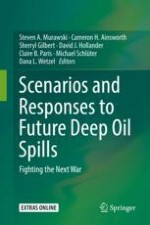2020 | OriginalPaper | Chapter
22. Connectivity of the Gulf of Mexico Continental Shelf Fish Populations and Implications of Simulated Oil Spills
Authors : Claire B. Paris, Steven A. Murawski, Maria Josefina Olascoaga, Ana C. Vaz, Igal Berenshtein, Philippe Miron, Francisco Javier Beron-Vera
Published in: Scenarios and Responses to Future Deep Oil Spills
Publisher: Springer International Publishing
Activate our intelligent search to find suitable subject content or patents.
Select sections of text to find matching patents with Artificial Intelligence. powered by
Select sections of text to find additional relevant content using AI-assisted search. powered by
